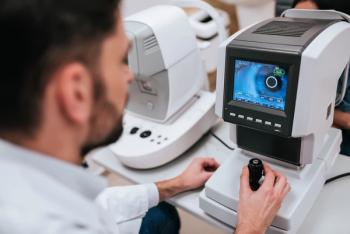
Rural patients are now outnumbering rural ophthalmic surgeons, study reports
The study found that 17.4% of Medicare patients needed subspecialized procedures relative to 5.6% of surgeons practicing in rural areas between 2012 and 2022.
A recent study published in JAMA Ophthalmology highlights an imbalance in rural patients in comparison to rural ophthalmic surgeons, with a decrease in surgeons practicing rurally found over time.1 The cross-sectional, population-based study, led by Aishah Ahmed, MD, PhD, of the Wilmer Eye Institute, John Hopkins University School of Medicine in Baltimore, Maryland, found that 17.4% of Medicare patients needed subspecialized procedures relative to 5.6% of surgeons practicing in rural areas.
“It has been established that limited access to ophthalmic care generates negative outcomes among rural or patients in underserved communities, including increased prevalence of visual impairment, diabetic retinopathy, and macular degeneration.
“As such, it is crucial that there is a rural ophthalmic subspecialist workforce available to meet rural patients’ ophthalmic needs,” the study authors stated.
Medicare patients and surgeons performing subspecialized procedures that took place from 2012 through 2022 were analyzed in the study. A total of 13,526 ophthalmic surgical subspecialists were included in the study, with 9823 (72.6%) being male and 3235 (26.8%) being female. Over 33%, or 4484, surgeons practiced in the south. Additionally, the study analyzed Medicare Fee-for-Service claims in 2023 for patients 65 years or older who underwent subspecialized ophthalmic procedures between 2012 and 2022 using Current Procedural Terminology codes (n = 1 619 043). Surgeons were also defined as subspecialist based on these codes, which indicated performance of at least 1 subspecialty procedure in either cornea, glaucoma, oculoplastic, retina, or strabismus (n = 13 526). Retina subspecialists made up the majority of surgeons in the study at 30%.1
Across subspecialties, a higher proportion of patients (17.4%; 95% CI, 16.9%-17.9%) resided in rural areas relative to surgeons (5.6%; 95% CI, 5.3%-5.9%) with differences ranging from 6.2% to 14.8% across subspecialities. The percentage of cornea surgeons has decreased in rural areas by 1.3%, with glaucoma, oculoplastic, and retina subspecialists decreasing by 3.3%, 2.1%, and 0.4%, respectively. Female surgeons and recent medical school graduates were also less likely to practice rurally, according to the study.1
“Our work suggests a concerning geographic disparity in rural ophthalmic surgeons available to serve the needs of rural patients,” stated the study authors.
In a news release, AOA President Steven T. Reed, OD, stated that a shortage of practicing ophthalmologists in rural areas can be avoided by harnessing the competencies of optometrists.2
“The distribution of doctors of optometry across rural America is a high-quality and effective answer to the shortage of ophthalmologists in rural areas,” Reed said in the release.2 “State laws must be updated to allow optometrists to practice what they are taught for the benefit of patients across the country, particularly rural America. To provide effective care, ophthalmology subspecialists should solely focus on the niche care they provide rather than duplicating services provided by optometrists.”
References:
Ahmed A, Ali M, Dun C, Cai CX, Makary MA, Woreta FA. Geographic distribution of US ophthalmic surgical subspecialists. JAMA Ophthalmol. 2025. Epub ahead of print. doi: 10.1001/jamaophthalmol.2024.5605
In rural America, opportunity for optometry amid shortfall of ophthalmologists. News release. American Optometric Association. January 23, 2025. Accessed February 17, 2025.
https://www.aoa.org/news/advocacy/state-advocacy/in-rural-america-opportunity-for-optometry-amid-shortfall-of-ophthalmologists?sso=y
Newsletter
Want more insights like this? Subscribe to Optometry Times and get clinical pearls and practice tips delivered straight to your inbox.













































